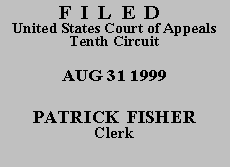

| UNITED STATES OF AMERICA, |
|
On July 6, 1998, defendant pled guilty to a one-count indictment charging him with possession with intent to distribute a quantity of cocaine base in violation of 21 U.S.C. § 841(a)(1). The district court sentenced defendant to 151 months imprisonment and a five-year term of supervised release. It also ordered defendant to pay a $100 special assessment. On appeal, defendant challenges the amount of drugs that the district court used at sentencing to establish his base offense level. We affirm.
Prior to and at sentencing, defendant objected to the inclusion of 56 grams of crack cocaine in the drug quantity used to establish the base offense level. In response to defendant's objection, the original Presentence Report ("PSR"), which stated that 56 grams were sold on March 24, 1998, was revised to state that this quantity of drugs was sold over a period of time, on four different occasions. The probation officer testified at sentencing that in writing her initial report she mistakenly confused the date the agent interviewed the informant, March 24, 1998, with the date of the drug transaction. At the sentencing hearing, she testified that she knew the 56 grams stemmed from two separate purchases and would need to review her notes to determine why she had revised the report to indicate four transactions had taken place. The district court ultimately found that the evidence presented at the sentencing hearing supported the inclusion of the 56 grams of cocaine base in establishing his offense level.
We review a sentencing court's drug quantity calculation for clear error. See United States v. Ruiz-Castro, 92 F.3d 1519, 1534 (10th Cir. 1996); United States v. Edwards, 69 F.3d 419, 438 (10th Cir. 1995). The government has the burden of proving the quantity of drugs for sentencing by a preponderance of the evidence. See Ruiz-Castro, 92 F.3d at 1534; Edwards, 69 F.3d at 438.
Here, an informant, Reed, testified at the sentencing hearing that he dropped off a drug dealer, Tobias, at defendant's residence on two occassions. At Tobias' instruction, Reed circled the block while Tobias completed the purchase of crack cocaine. Reed stated that when he picked Tobias up, Tobias told him he had purchased the cocaine base from defendant and showed the substance to him. After the first transaction, Tobias weighed the cocaine base in front of Reed. Reed testified the scales showed it weighed one ounce, or approximately 28 grams. After the second transaction, Tobias showed Reed the crack cocaine. Reed testified that he estimated it weighed an ounce the same as the last purchase. Tobias did not testify.
Defendant argues that the district court clearly erred in relying on the hearsay statement that Tobias purchased the crack cocaine from defendant. However, a district court may properly rely on hearsay statements for sentencing purposes as long as they possess some minimal indicia of reliability. See U.S.S.G. § 6A1.3(a); United States v. Browning, 61 F.3d 752, 755 (10th Cir. 1995). In this case, the district court specifically stated:
That it wasn't just the statement of Tobias that is before the Court, take it or leave it, with regard to credibility. As I recalled, the testimony was that Reed and Tobias went to Altus specifically looking for or with the purpose of finding this defendant's house, a known drug house, for the purpose of acquiring crack cocaine; that this defendant was seen by Reed standing in the doorway of his house, where upon Tobias went to the house and immediately returned with a quantity of cocaine which was weighed in Reed's presence; and that happened, essentially, that way on two occasions.
Sentencing Tr. at 45-46. Thus, the district court found that the hearsay testimony that Tobias purchased the drugs from defendant possessed sufficient indicia of reliability for it to be taken into consideration at sentencing. It therefore held the defendant responsible for the 56 grams of crack cocaine involved in these two transactions. We can find no clear error in this determination. We AFFIRM.
ENTERED FOR THE COURT,
Deanell Reece Tacha
Circuit Judge
*.This order and judgment is not binding precedent, except under the doctrines of law of the case, res judicata, and collateral estoppel. This court generally disfavors the citation of orders and judgments; nevertheless, an order and judgment may be cited under the terms and conditions of 10th Cir. R. 36.3.